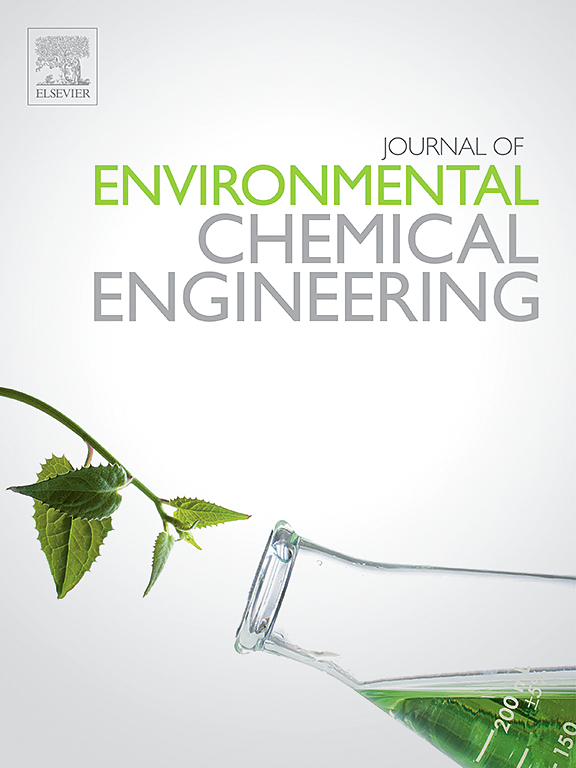超声辅助吸附和解吸技术综述:机理、影响因素、应用和前景
IF 7.4
2区 工程技术
Q1 ENGINEERING, CHEMICAL
引用次数: 0
摘要
环境和资源问题是人类当前面临的主要挑战。如何经济有效地治理污染和循环利用资源一直是热门话题。吸附和解吸技术作为成熟的商业化方法,已经得到了大规模的广泛应用,其机理也得到了深入研究。同时,基于超声波的独特性质,超声波技术被广泛应用于制药和材料合成领域,在吸附和解吸过程中表现出非凡的传质能力,从而大大提高了这两种技术的性能。然而,有关超声波与吸附和解吸技术结合的机理尚未得到深入总结。因此,本综述的主要目的是:(a) 解释超声波辅助吸附和解吸系统的内在机理;(b) 讨论影响吸附和解吸系统的因素;(c) 提供超声波在吸附和解吸中的应用实例;(d) 展望促进吸附和解吸领域技术的发展,最终实现高效的资源循环利用。最后,超声波可以大大缩短达到吸附平衡所需的时间,并通过加速传质和改变吸附剂来提高吸附能力。在解吸领域,超声波通过其强烈的声化学效应,可以加速解吸过程,提高有价元素的回收率,改善污染物的去除效果。本文章由计算机程序翻译,如有差异,请以英文原文为准。
A critical review on ultrasound-assisted adsorption and desorption technology: Mechanisms, influencing factors, applications, and prospects
Environmental and resource issues are major challenges currently facing humanity. The cost-effective management of pollution and the recycling of resources have long been hot topics. Adsorption and desorption technologies, as mature and commercialized methods, have been widely applied on a large scale, and their mechanisms have been thoroughly investigated. Meanwhile, based on the unique properties of ultrasound, ultrasound technology, widely used in pharmaceuticals and materials synthesis, has shown exceptional mass transfer capabilities in adsorption and desorption, thereby greatly enhancing the performance of these two technologies. However, the mechanisms related to the combination of ultrasound with adsorption and desorption technology have not yet been thoroughly summarized. Therefore, the key aims of this review are to (a) explain the intrinsic mechanisms of ultrasound-assisted adsorption and desorption systems, (b) discuss the factors affecting adsorption and desorption systems, (c) provide examples of the application of ultrasound in adsorption and desorption, and (d) offer our perspectives to promote the development of technologies in the fields of adsorption and desorption, ultimately achieving efficient resource recycling. Finally, ultrasound can significantly reduce the time required to reach adsorption equilibrium and increase adsorption capacity by accelerating mass transfer and modifying adsorbents. In the field of desorption, ultrasound, through its intense sonochemical effects, can accelerate desorption processes, enhance the recovery rate of valuable elements, and improve the removal of pollutants.
求助全文
通过发布文献求助,成功后即可免费获取论文全文。
去求助
来源期刊

Journal of Environmental Chemical Engineering
Environmental Science-Pollution
CiteScore
11.40
自引率
6.50%
发文量
2017
审稿时长
27 days
期刊介绍:
The Journal of Environmental Chemical Engineering (JECE) serves as a platform for the dissemination of original and innovative research focusing on the advancement of environmentally-friendly, sustainable technologies. JECE emphasizes the transition towards a carbon-neutral circular economy and a self-sufficient bio-based economy. Topics covered include soil, water, wastewater, and air decontamination; pollution monitoring, prevention, and control; advanced analytics, sensors, impact and risk assessment methodologies in environmental chemical engineering; resource recovery (water, nutrients, materials, energy); industrial ecology; valorization of waste streams; waste management (including e-waste); climate-water-energy-food nexus; novel materials for environmental, chemical, and energy applications; sustainability and environmental safety; water digitalization, water data science, and machine learning; process integration and intensification; recent developments in green chemistry for synthesis, catalysis, and energy; and original research on contaminants of emerging concern, persistent chemicals, and priority substances, including microplastics, nanoplastics, nanomaterials, micropollutants, antimicrobial resistance genes, and emerging pathogens (viruses, bacteria, parasites) of environmental significance.
 求助内容:
求助内容: 应助结果提醒方式:
应助结果提醒方式:


